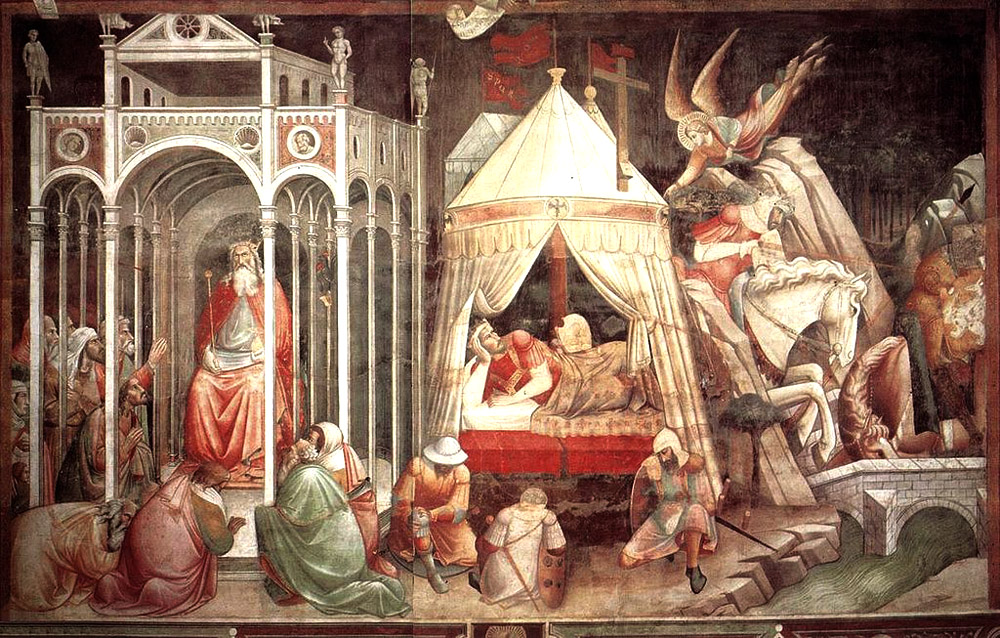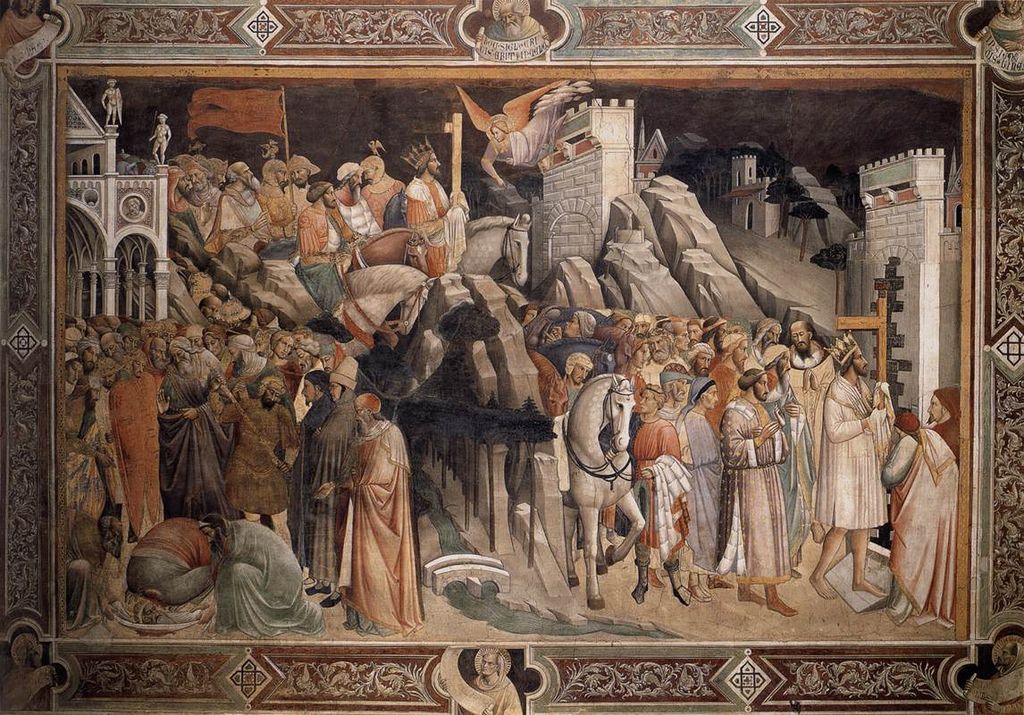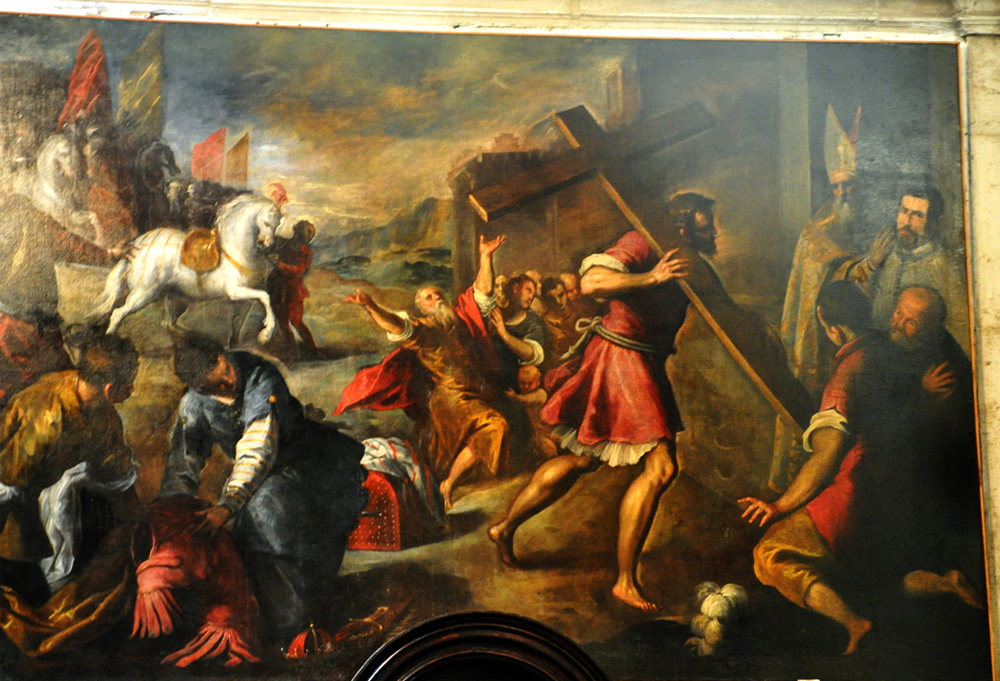Heraclius and the Holy Cross


All of this, except for Heraclius' dream, is straight out of the Golden Legend. In Palma's painting at the top of this page, Heraclius is also barefoot. Even his crown has been removed and left with his armor on the ground in the bottom left.
ICONOGRAPHIC DETAILS
Depictions of the story may include the entire series of events or just Heraclius's humble entry into Jerusalem. In the latter he is always humbly dressed and barefoot, and he usually carries the Cross himself. In Piero della Francesca's fresco he wears a tall mitre and a wrap of what could be sackcloth, and the cross is carried by an attendant. The pious reactions of the Jerusalem crowd are rendered in various ways – a single man bowing in Gaddi, seven or eight men kneeling in Piero, and an aged man raising his arms to Heaven in Palma (perhaps alluding to the blind men whom the Cross cured soon thereafter).The Golden Legend confusingly says that Chosroës had captured "part of the Cross" but that Heraclius "carried the sacred cross back to Jerusalem," as if it were the entire Cross. Gaddi chooses to picture a partial cross; others, including Palma, have a complete one.
Prepared in 2017 by Richard Stracke, Emeritus Professor of English, Augusta University
Palma il Giovane, Heraclius Bringing the Cross to Jerusalem, in the Church of San Giovanni Elemosynario.
DATES
- The Feast of the Exaltation of the Holy Cross is celebrated on September 14, the day in 335 when the Cross was carried into the newly dedicated Church of the Holy Sepulcher.
NAMES
- Chosroës is known to modern historians as Khosrau II.
ALSO SEE
- St. Helena
- Golden Legend #137: html or pdf.
- The Roman Breviary: English translation, IV, 542-43; Latin original, 1029-37.
